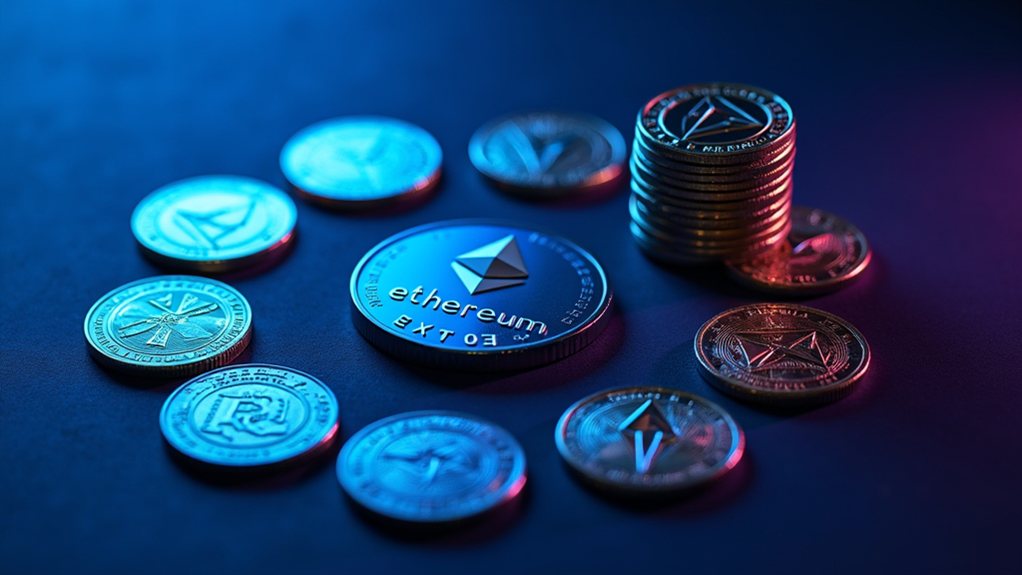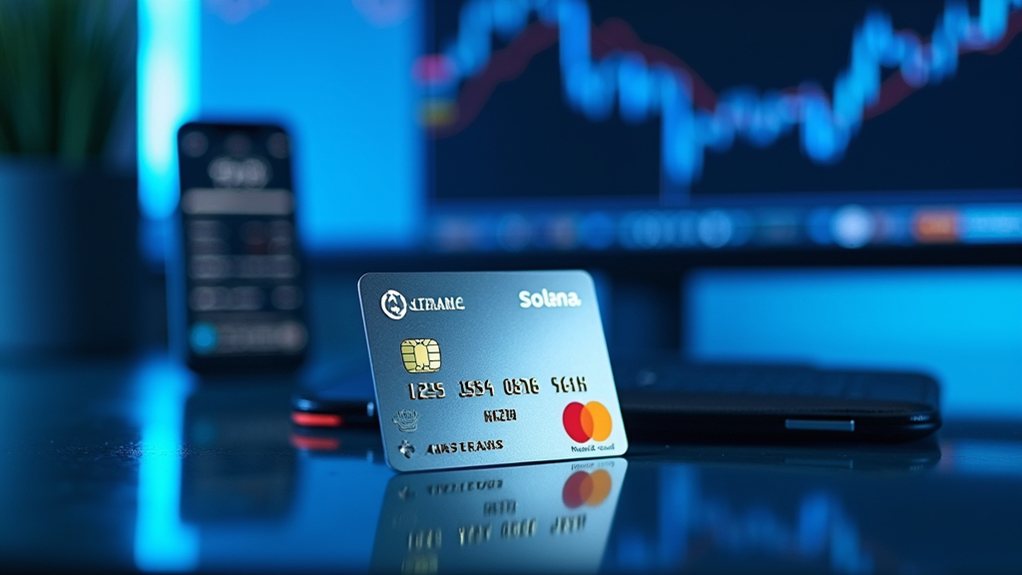Ethereum, the next-largest blockchain by market capitalization, has evolved into the primary infrastructure for stablecoin deployment and transactions, hosting an impressive array of dollar-pegged digital assets that collectively represent over $132.4 billion in market value. This robust ecosystem encompasses a wide variety of stablecoins, including USDC with approximately $35 billion in market capitalization, USDT, and DAI, offering users multiple options for stability within the cryptocurrency space.
These assets serve as fundamental building blocks within Ethereum‘s decentralized finance (DeFi) environment, enabling lending, borrowing, and liquidity provision across numerous protocols. The transaction processing for these stablecoins benefits from near-instantaneous settlements compared to traditional banking systems.
While Ethereum maintains dominance in the stablecoin market, its share has decreased from 68.9% to 53.9% over time, indicating growing competition from alternative blockchain networks like TRON. This diversification of blockchain utilization for stablecoin deployment represents both challenges and opportunities for Ethereum’s ecosystem participants, who benefit from a more resilient financial infrastructure not dependent on a single stablecoin asset.
Ethereum’s declining stablecoin market share signals both competitive pressure and ecosystem resilience through diversified asset infrastructure.
TRON’s heavy reliance on USDT, by contrast, creates potential systemic vulnerabilities should regulatory or market concerns impact Tether specifically.
Ethereum-based stablecoins offer significant advantages over traditional financial systems, including 24/7 settlement capabilities that eliminate banking hours restrictions, reduced fees for cross-border transactions, and programmable money applications through smart contract integration.
These features contribute to broader financial inclusion by providing services to underbanked populations globally, while maintaining transaction security through Ethereum’s robust cryptographic protocols.
The integration of stablecoins within Ethereum’s DeFi ecosystem creates synergistic effects, with these stable assets providing crucial collateral for lending protocols and stability within liquidity pools. Ethereum continues to be the primary settlement layer for digital dollar transactions despite the emergence of alternative blockchains.
During market volatility, stablecoin market caps often demonstrate remarkable resilience and even increase during market downturns, serving as a testament to their crucial function as volatility hedges.
This multi-dimensional utility across a range of applications demonstrates why Ethereum’s diverse stablecoin arsenal represents a strategic advantage over more concentrated approaches like TRON’s, establishing a more sustainable foundation for blockchain-based financial services.









